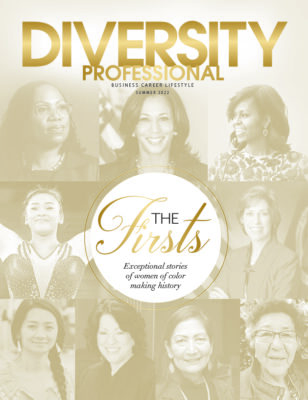2020 In Review: A Difficult Year For All
Remembering a tumultuous year for many and global events that affected everyone.
Like most new years, 2020 was met with optimism and enthusiasm. The economy was good, there were no indicators of disruption in sight. However, in a few short weeks, that changed. On January 26, famed basketball player Kobe Bryant, his daughter and seven others lost their lives in a tragic helicopter crash in Calabasas, California. People everywhere grieved the loss of the NBA legend. On that same day, many news outlets reported a deadly coronavirus had originated in China, and cases had been detected in the United States. For weeks, Bryant’s death was headline news and coverage of the coronavirus failed to gain attention.
By February, the country was once again distracted by congressional hearings for the impeachment of President Trump, which ended in his acquittal of the abuse of power and obstruction of articles of impeachment. At this time, there was only one reported coronavirus-related American death, but hundreds had already lost their lives in China. When March rolled in, life, as we knew it, had begun to change. The racial divide and tension in the country peaked following the murder of Breonna Taylor, a 26-year-old emergency medical technician who was shot eight times when police officers raided her apartment in Louisville, Kentucky. The Black community was outraged at the lack of regard that police had shown for her life, staging protests for police reform.
COVID-19, the disease caused by the coronavirus, was the top news story. Americans watched intently as medical experts shared safety precautions necessary to protect ourselves and family. The terms ‘social distancing’ and ‘sheltering in place’ suddenly became our new way of life. Companies closed their doors and sent employees away to work from home, elevating occasional virtual work schedules to our new normal. The fear and panic experienced was like nothing imagined—people stampeding through grocery and big box stores clearing entire inventories and leaving shelves bare, a mad rush to stock up on masks, hand sanitizers and cleaning products, and hoarding toilet paper causing a nationwide shortage.
In April, as a result of the shutdowns, the U.S. unemployment rate was nearly 15%, and millions were struggling to afford mortgage and rent payments. Congress responded by signing into law the Coronavirus Aid, Relief, and Economic Security Act, authorizing more than $2 trillion to battle the economic effects of COVID-19. The Paycheck Protection Program provided loans for eligible small businesses for payroll obligations, emergency grants to cover immediate operating costs, and a mechanism for loan forgiveness where the small business can demonstrate that the loan proceeds were used for payroll and related costs. Although many business owners took advantage of the loans, it was not enough to sustain the thousands that closed permanently.
On May 25, Americans watched in horror as a Black man begged for his life as three Minneapolis police officers held him on the ground under their body weight, killing him. There would be no unseeing the murder of George Floyd for the millions of people worldwide who watched the video a record-breaking 1.4 billion times. Outrage sparked worldwide protests as millions marched in solidarity for justice for Floyd. As the social justice organization Black Lives Matter (BLM) led peaceful protests denouncing violent police behavior, it gained supporters from other segments of society and the movement grew larger than ever. However, their message for peace and nonviolence was overshadowed by violent agitators and looters claiming to be members. In some cities, protestors identified police officers damaging property and contributing to the violence disguised as BLM protestors. Distrust of police was at an all-time high.
COVID-19 deaths in the U.S. exceeded 100,000. Mandatory shutdowns had impacted homelessness, poverty and economic instability as stock prices declined. The pandemic affected every segment of society, and most Americans lost a relative, friend or colleague to the virus. In the weeks following Floyd’s death, it appeared corporate America experienced an awakening as CEOs pledged to do a better job to ensure their organizations implemented more aggressive diversity and inclusion efforts.
On June 6, former Vice President Joe Biden was officially announced as the opponent to President Trump in the November election. A few weeks after winning the nomination, Biden named Kamala Harris, the biracial senator from California, and strong advocate for diversity and equality, as his vice-presidential running mate. By early fall, life had started to slightly resemble normalcy, businesses reopened and people were feeling more comfortable going out again.
In November, Biden won his bid for the presidency, making Kamala Harris the first woman and woman of color to serve as vice president.
The year 2020 will go down in history as one that has been particularly difficult on the Black community. As more data on COVID-19 cases became available, it was determined that Blacks were being infected at higher rates than whites, and that the virus was disproportionately killing Blacks. The community was outraged once again on speculation that the medical community was not providing the same level of care to Black patients.
Factors such as the global pandemic and its devastating impact on Blacks, the deaths of Floyd, Taylor and several others, the ongoing experiences with discrimination and racism in the workforce, has contributed to the rise of another term—racial battle fatigue, which has detrimental mental health implications for members of the Black community. By publication date, COVID-19 cases and deaths have increased, vaccines are being administered globally to some success and a new coronavirus variant has been identified resulting in limited travel restrictions in certain parts of the world. Here’s hoping we can put the devastation of 2020 behind us, to focus our energies and emotions on a peaceful and healthy, as well as more inclusive and prosperous time ahead for all.









